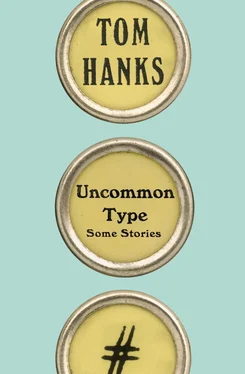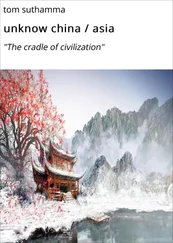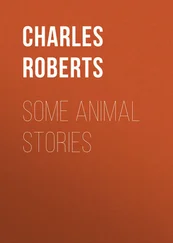The big event of translunar space is crossing the equigravisphere, a boundary as invisible as the International Date Line but, for the Alan Bean, the Rubicon. On this side of the EQS, Earth’s gravity was tugging us back, slowing our progress, bidding us to return home to the life-affirming benefits of water, atmosphere, and a magnetic field. Once we crossed, the moon grabbed hold, wrapping us in her ancient silvery embrace, whispering to us to hurry hurry hurry to wink in wonder at her magnificent desolation.
At the exact moment that we reached the threshold, Anna awarded us origami cranes, made out of aluminum foil, which we taped onto our shirts like pilots’ wings. I put the Alan Bean into a Passive Thermal Control BBQ roll, our moon-bound ship rotating on an invisible spit so as to distribute the solar heat. Then we dimmed the lights, taped a sweatshirt over the window to keep the sunlight from sweeping across the cabin, and slept, each of us curled up in a comfortable nook of our little rocket ship.
When I tell people that I’ve seen the far side of the moon, they often say, “You mean the dark side,” as though I’d fallen under the spell of Darth Vader or Pink Floyd. In fact, both sides of the moon get the same amount of sunshine, just on different shifts.
Because the moon was waxing gibbous to the folks back home, we had to wait out the shadowed portion on the other side. In that darkness, with no sunlight and the moon blocking the Earth’s reflection, I pulsed the Alan Bean around so that our window faced outbound for a view of the Infinite Time-Space Continuum that was worthy of IMAX: unblinking stars in subtle hues of red-orange-yellow-green-blue-indigo-violet, our galaxy stretching as far as our eyes were wide, a diamond-blue carpet against a black that would have been terrifying had it not been so mesmerizing.
Then there was light, snapping on as if MDash had flipped a switch. I tweaked the controls, and there below us was the surface of the moon. Wow. Gorgeous in a way that strained any use of the word, a rugged place that produced oohs and awe. The LunaTicket app ($0.99) showed us traversing south to north, but we were mentally lost in space, the surface as chaotic as a windblown, gray-capped bay, until I matched the Poincaré impact basin with the “This Is Our Moon” guide on my Kobo. The Alan Bean was soaring 153 kilometers high (95.06 miles Americanus ), at a speed faster than that of a bullet from a gun, and the moon was slipping by so fast that we were running out of far side. Oresme Crater had white, finger-painted streaks. Heaviside showed rills and depressions, like river washouts. We split Dufay right in half, a flyover from its six to its twelve, the rim a steep, sharp razor. Mare Moscoviense was far to port, a miniversion of the Ocean of Storms, where four and a half decades ago the real Alan Bean spent two days, hiking, collecting rocks, snapping photos. Lucky man.
Our brains could take in only so much, so our iPhones did the recording, and I stopped calling out the sights, though I did recognize Campbell and D’Alembert, large craters linked by the smaller Slipher, just as we were about to head home over the moon’s north pole. Steve Wong had cued up a certain musical track for what would be Earthrise but had to reboot the Bluetooth on Anna’s Jambox and was nearly late for his cue. MDash yelled, “Hit PLAY, hit PLAY!” just as a blue-and-white patch of life—a slice of all that we have made of ourselves, all that we have ever been—pierced the black cosmos above the sawtooth horizon. I was expecting something classical, Franz Joseph Haydn or George Harrison, but “The Circle of Life,” from The Lion King, scored our home planet’s rise over the plaster-of-Paris moon. Really? A Disney show tune? But, you know, that rhythm and that chorus and the double meaning of the lyrics caught me right in the throat, and I choked up. Tears popped off my face and joined the others’ tears, which were floating around the Alan Bean . Anna gave me a hug like I was still her boyfriend. We cried. We all cried. You’d have done the same.
Coasting home was one fat anticlimax, despite the (never spoken) possibility of our burning up on reentry like an obsolete spy satellite circa 1962. Of course, we were all chuffed, as the English say, that we’d made the trek and maxed out the memory on our iPhones with iPhotos. But questions arose about what we were going to do upon our return, apart from making some bitchin’ posts on Instagram. If I ever run into Al Bean again, I’ll ask him what life has been like for him since he twice crossed the equigravisphere. Does he suffer melancholia on a quiet afternoon, as the world spins on automatic? Will I occasionally get the blues, because nothing holds a wonder equal to splitting Dufay down the middle? TBD, I suppose.
“Whoa! Kamchatka!” Anna called out as our heat shield expired into millions of grain-size comets. We were arcing down over the Arctic Circle, gravity once again commanding that we who went up must come down. When the chute pyros shot off, the Alan Bean jolted our bones, causing the Jambox to lose its duct-tape purchase and conk MDash in the forehead. By the time we splashed down off Oahu, a trail of blood was running from the ugly gash between his eyebrows. Anna tossed him her bandanna, because guess what no one had thought to take around the moon? To anyone reading this with plans to imitate us: Band-Aids.
At Stable One—that is, bobbing in the ocean, rather than having disintegrated into plasma—MDash tripped the “Rescue us!” flares that he’d rigged under the Parachute Jettison System. I opened the pressure-equalizing valve a tad early, and—oops—noxious fumes from the excess-fuel burnoff were sucked into the capsule, making us even queasier, what with the mal de mer.
Once the cabin pressure was at the same psi as outside, Steve Wong was able to uncork the main hatch, and the Pacific Ocean breeze whooshed in, as soft as a kiss from Mother Earth, but owing to what turned out to be a huge design flaw, that same Pacific Ocean began to join us in our spent little craft. The Alan Bean ’s second historic voyage was going to be to Davy Jones’s locker. Anna, thinking fast, held aloft our Apple products, but Steve Wong lost his Samsung (the Galaxy! Ha!), which disappeared into the lower equipment bay as the rising seawater bade us exit.
The day boat from the Kahala Hilton, filled with curious snorkelers, pulled us out of the water, the English speakers on board telling us that we smelled horrid, the foreigners giving us a wide berth.
After a shower and a change of clothes, I was ladling fruit salad from a decorative dugout canoe at the hotel buffet table when a lady asked me if I had been in that thing that came down out of the sky. Yes, I told her, I had gone all the way to the moon and returned safely to the surly bonds of Earth. Just like Alan Bean.
“Who’s Alan Bean?” she said.
==============
Our Town Today
with
Hank Fiset
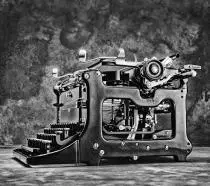
==============
AT LOOSE IN THE BIG APPLE
NEW YORK CITY!On my own for three days as my wife let me tag along as she celebrated her Twenty-fifth College Reunion with her Sorority Sisters of Gotta Getta Guy. I had not been to the isle of Manhattan since Cats was on B’way and hotel TVs were not high-def.
* * *
SO, WHAT’S NOO in Noo Yawk? Too much, if you have fond memories of the place, but little if the Naked City leaves you feeling, well, naked. I think NYC comes off way better on TV and in the movies, when a taxi is just a whistle away and superheroes save the day. In the real world (ours) every day in Gotham is a little like the Macy’s Thanksgiving Day Parade and a lot like Baggage Claim after a long, crowded flight.
Читать дальше
